The new edition of the Horus Heresy is something many people thought would never happen.
This offshoot of the primary Warhammer 40,000 line was, for a long time, a niche within a niche – a product which its fans were certainly very passionate about, but which struggled to attract a broader appeal (which I can’t understand, as it’s the Best Game and everyone should play it).
Alan Bligh’s epic vision started with Book One: Betrayal – which was released in 2012, so nearly ten years ago to the day. It has taken that long for a second edition to come around, and sadly Alan is not here to see it, having passed away in 2017.
But, finally, it’s here – and Goonhammer benefited from an early copy of it for keen study and analysis.
Below we set out an overview of this new book, and then go through the key changes to the core rules and briefly discuss each of these. We’d also like to thank Games Workshop for sending a preview copy of the book for review purposes.
There are a lot of changes.
This is one of three primary new books – the others being Liber Hereticus (Traitor Legions), and Liber Astartes (Loyalist Legions). Games Workshop have made clear that, to start with, it is going to be just Legion rules available – but Mechanicum, Talons of the Emperor, Cults & Militia, Solar Auxilia and Daemons of the Ruinstorm will no doubt soon follow.
Grab your Boltgun and strap into the Drop Pod – we’re going into the Age of Darkness.
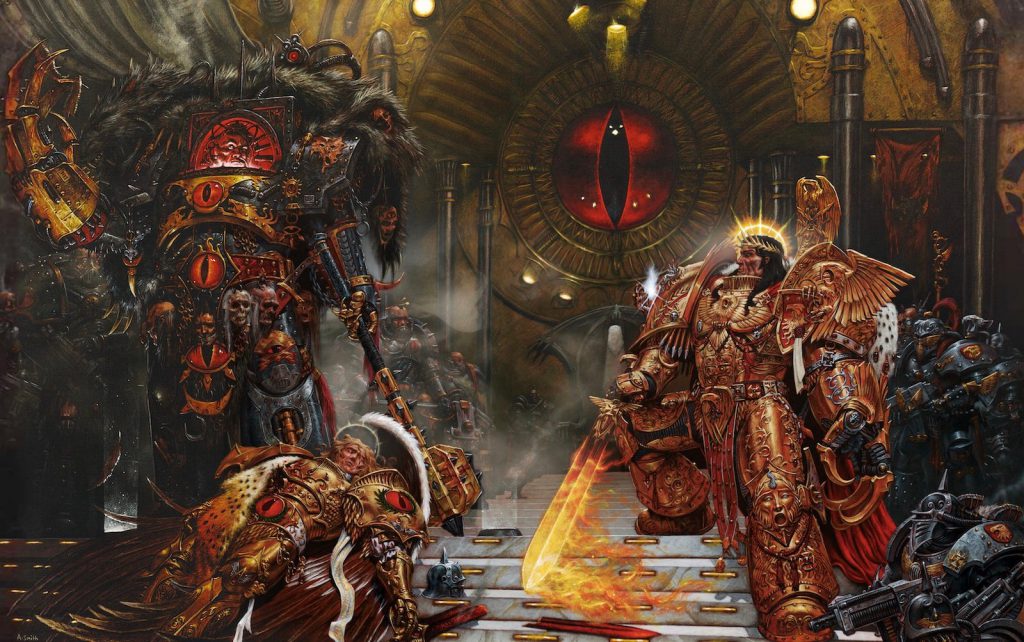
Overview
The new book is a gorgeous black tome called The Age of Darkness Rulebook – clocking in at 334 pages. It replaces the old “red book” in its entirety.
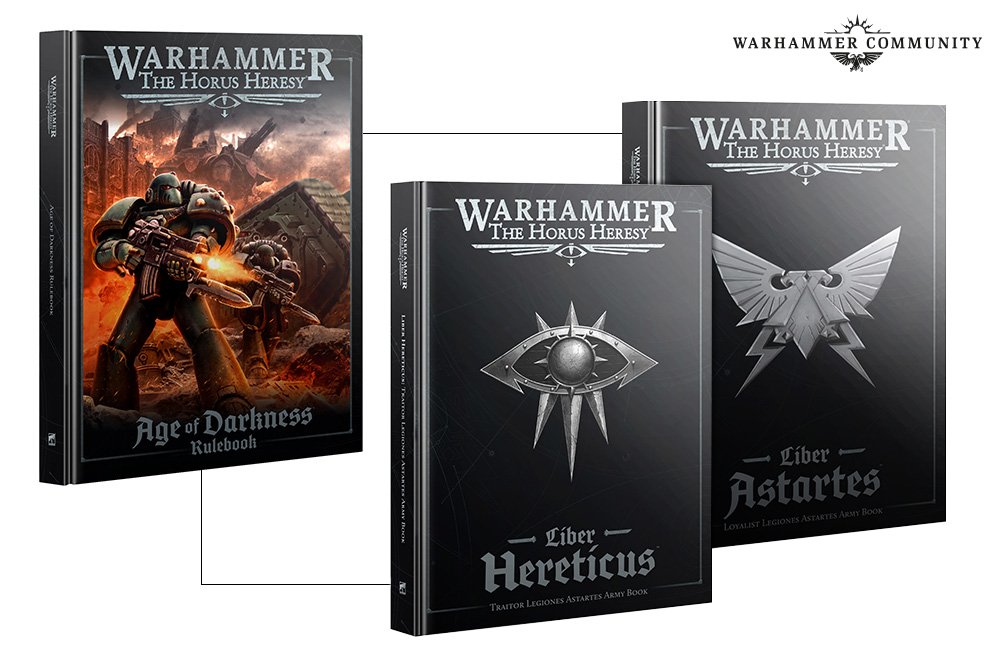
This book contains everything you need to play the game itself, but does not have the army lists – for those you need the Liber Astartes or Liber Hereticus. This is, therefore, a “two book” game, and they are big books – the rulebook is the smallest at 334 pages, and Hereticus stretches to a girthy 350 or so.
The first section is a detailed overview of the lore of the setting. I would strongly recommend checking this out – it is a condensed version of the superb “Black Books” lore which has been set out in the past, taking the reader through the epic, Shakespearean conflict of the Heresy. There is then a run through of the various factions at play (obviously the Astartes, but also the Solar Auxilia, for example) and a review of all the pivotal events such as the Burning of Prospero.
In terms of the rules, these are in the “Core Rules” section. There are the usual overviews you would expect of statlines, the various phases of the game, unit types, psychic powers, rules for vehicles, special rules and the like.
The book also contains various ways to play (e.g. Matched Play or Open Play), along with deployment maps and the 6 core mission types (many of which will be familiar – e.g. War of Lies or Shatter Strike). Finally, at the back are handy reference sheets which I can see many people photocopying and having to hand.
Interspersed throughout are gorgeous photographs, including a great Battlefield Showcase section around page 290.
The rules are still based on what used to be 7th edition, but are very much their own game now, which is discussed in further detail below.
It incorporates some parts of 9th (e.g. Movement Values), but does not stray as far as some of the more radical (heretical?) changes made in the 7th – 8th edition transition, such as removing templates and armour facings. Yes, you still have scatter dice.
Much of the statlines and the way the game works “under the hood” will, therefore, be very familiar to anyone who played the first edition of the game (or, indeed, 7th edition 40k back in the day).
My first impressions are that the game is a bit more “crunchy” and nuanced with the changes that have been made.
Some will roll their eyes and ask whether Warhammer games need to be more complicated – and believe me, I hear you. However, I think all these changes are largely for the better, and will make the game much more dynamic to play.
Some examples of the “crunchy” changes (discussed further below) are the way Morale works (units are much more likely to be Pinned or Fall Back) and the much-discussed Reactions, which steps away from a rigid turn system to something with more player interactivity. This will, no doubt, come as a relief to anyone who has sat through a World Eaters horde army movement phase!
If you’re new to this and coming from 9th the big difference will be how the rules interact with one another.
This game does not use datasheets – again, a bugbear for some – but rather has universal special rules (e.g. Furious Charge) which apply in the same way each time they appear on a statline.
My experience is that this means a bit more flicking back and forth initially, but then in the longer run is simpler than 9th edition’s approach of having 15 different names for the same damn rule.
To orient you to what has changed, we’ve helpfully listed them out below. We discuss these further as we go through the article.
- Reactions – An “interrupt” mechanic where you can do things in your opponent’s turn;
- The addition of Movement Characteristics;
- Changes to the Weapon Skill table;
- A re-designed (i.e. completely removed!) Psychic Phase;
- Changes to how Charging works;
- Tweaks to the Wound allocation and Morale systems;
- Being able to pick your own Warlord Traits;
- Revised and additional Unit types, and a re-working of the Vehicle rules
- Amendments and additions to many Universal Special Rules (e.g. Rending); and
- New ways to Deep Strike and Outflank.
The above is not exhaustive! It is a real rework, and my impression as an experienced player of Heresy is that all of it is good.
The Lore
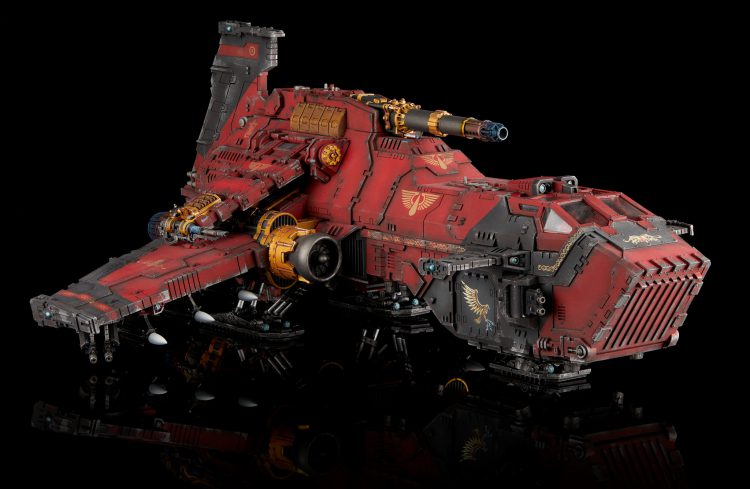
Lupe: Before we get to the rules, the book dives into an extremely thorough breakdown of the lore and background material you’ll need to get up to speed on what the Horus Heresy is. For those who are familiar with the “Black Books” of the previous edition very little of this will be new as such, but this is probably the best and most coherent summary of the setting to date.
It begins by weaving the tale of humanity as it crawls desperately into the 30th Millennium: the chaos and horrors of Old Night, the Unification Wars and the rise of the Emperor and his favoured servants. It then moves into the opening stages of the Great Crusade as the newly created Legiones Astartes pour out into the galaxy and bring it into Compliance. Finally we reach the bulk of the setting of the game itself, as the Emperor withdraws to Terra and Horus begins to his uprising against his father’s rule. It’s compelling and clearly written, and you’ll find plenty of exciting little points of lore to keep you interested. If you’re not someone with a great familiarity with this setting it will get you up to speed fantastically.
Once this is out of the way we tear into a more in-depth and substantial look at the Legiones Astartes themselves, both their creation and also the armour they wear. Again very little of this is new but I don’t think I’ve seen it presented like this before, and in particular the mark-by-mark overview of power armour is something I’ve often wished for in a book in the past and is wonderfully illustrated with example Legionaries in each mark of armour.
Each of the Legions are then covered with a few pages filling you in on their background. While this is going to feel brief to those who have the Black Books to hand to reference, it’s lovely having it all in one place. Each one has a gorgeous illustration of the Primarch and a great colour plate showing a typical Legionary as well as some heraldry for painting and modelling. A surprising amount is packed into each of these pages, and they’re a great read.
On top of this is a similar treatment for the other factions in the setting, which will be a relief to those who were worried it was going to be “All Space Marines All the Time”. It was particularly interesting to see the Imperial Assassins and the Ordo Sinister get call outs and page spreads, which potentially suggest we might see more of them on the battlefields of the game in the future. The notable absence here are the Imperial Militias – the Solar Auxilia get a lot of information on them, but the broader sweep of human forces is conspicuously absent, as are the Daemons of the Ruinstorm (though they get a separate callout in the next section, despite not being included in the faction listing).
The lore section wraps up with a timeline of major events and a detailed map. This stuff is great but is very much a whistle stop tour of the setting (which is perfect for the main book) and hopefully we’ll see future books flesh some of it out. All in all the setting material here is perfect for people coming to the Heresy fresh, but veterans aren’t likely to get much out of it other than marveling at the beautiful artwork.
Horus Heresy vs 9th Edition

As set out above, this is a different game to 9th edition Warhammer. Anyone who played 7th edition or earlier will be much more familiar with how Horus Heresy plays, but it has been some time since the change over to 8th, and not everyone is a terrible grognard like me.
Broadly, it works like this:
- It is intended to be played as a 1 v 1 matchup between two armies of between 2,000-3,500 points. Every model and unit has points values (there are no Power Levels).
- The game plays in alternating turns (with Reactions, discussed below), made up of the Movement, Shooting and Assault Phases (no Psychic Phase). Games are usually 5-7 turns and focused on a series of objectives, some of which are “mission-specific” (e.g. capture an objective), some of which are “universal” (e.g. kill the enemy Warlord).
- Units are broadly split into Vehicle and non-Vehicle units, which act in different ways. Vehicles have “armour facings” (e.g. stronger at the front, weaker at the back) and Hull Points rather than Wounds, with rules specific to them, such as different ways of moving, and the ability to fire multiple different types of weapons. Some units can be taken along in Transports for added protection.
- Some weapons use templates – a special flamer template or blast templates – which are included in the box along with a “scatter dice” which can randomly move the template around depending on the circumstances. You cannot usually “split fire” at different targets.
- There is a strong emphasis on Characters – whether lowly Sergeants, Apothecaries, or powerful Primarchs – who can be embedded in units on the battlefield and give them buffs and added punch.
- Most units are homogenous – i.e. all armed with the same thing, representing the specialised nature of Legionary warfare. For example, Tactical Legionaries all have boltguns by default – no adding in a flamer or a missile launcher!
- There are no “datasheets” – instead, each unit has a profile which lists its abilities and upgrades, which are often then cross-referenced to a list of Universal Special Rules (USR), which apply the same way to every unit which has them. Unit profiles similar to 9th – e.g. BS, WS, etc – except BS and WS are a value, not a dice roll, and you check against a table to see what you then need to hit. You also have an Initiative value, rather than the “fight first/last” effects of 9th.
- Weapons have Armour Penetration (AP) but it works differently – not a save modifier, but rather something which ignores a save entirely (e.g. AP 4 ignores 4+ and worse). Weapons do not have Damage profiles.
- All Space Marine (the primary faction) forces use the same core army list, and you then pick a Legion. The Legion will give you access to special rules specific to that Legion, and some neat Legion-specific units representing their elite troops, as well as the mighty Primarch and potentially other special characters.
Movement Values
Anyone who played older editions of Warhammer, or 9th, will be familiar with the concept of a Movement Value – they’re back for 2nd Edition Heresy. The value is a number which equates to the number of inches you can move on the battlefield.
The baseline stat is 7 – representing a Space Marine Legionary. This is slightly faster than older editions (6”). It also makes much more variety and nuance in how things can manouveure, and why you might take some units over others. For example, Scouts in lighter armour have M 8, Rhinos now have M 14, but mobile artillery like Rapiers are M 4, and Terminators are slower at M 6.
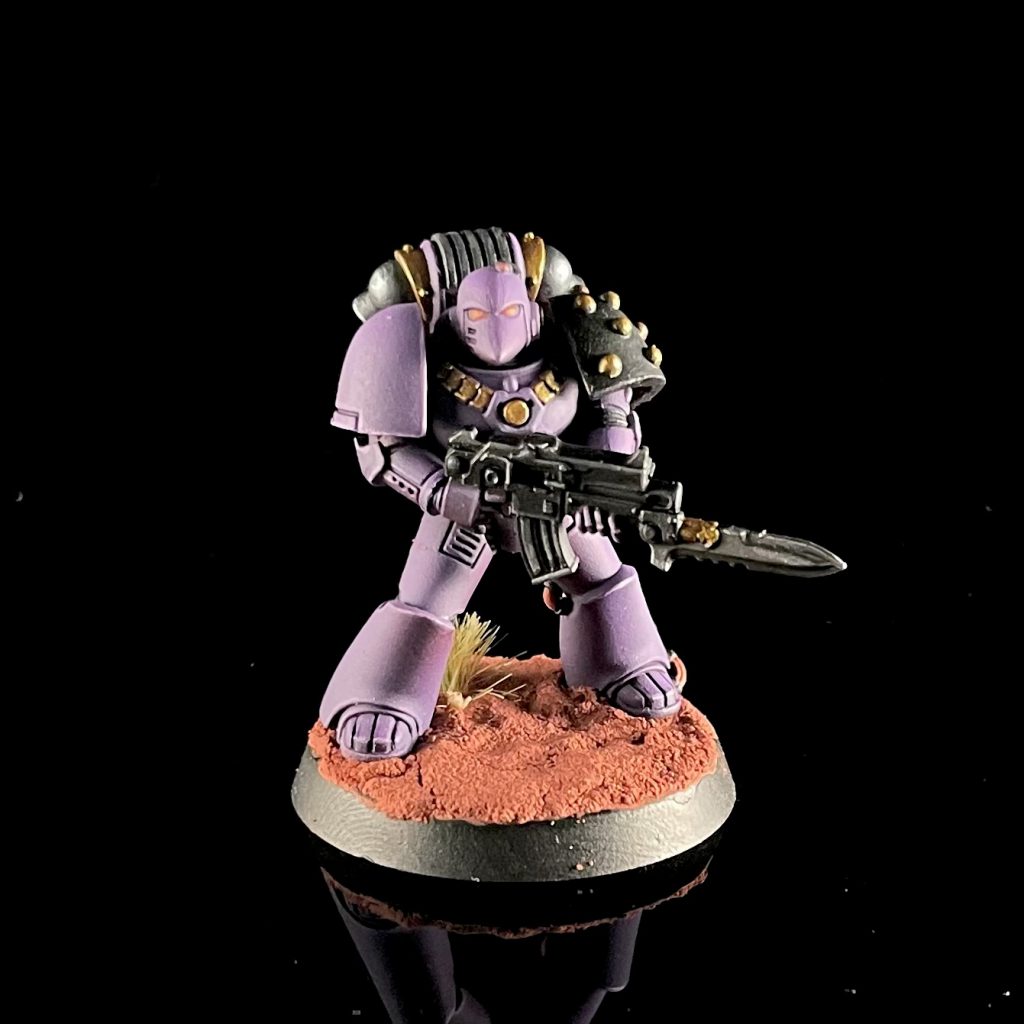
On top of this, units can Run as an additional boost to moving, rather than shooting. Running is standardised – it’s in the Movement phase (not the Shooting phase as in earlier editions) and you increase your Movement Value by your Initiative Characteristic (e.g. M 11 for Legionaries). A welcome element of reliability and simplicity, and means you aren’t constantly rolling and dealing with randomness just to move about.
Technically this is another stat to remember. However, the Heresy is Legion-dominated, so generally the Movement values of each side will be consistent.
My view is that the inclusion of this stat it will make for a much more dynamic game (you’ll use the whole tabletop of the 6’ x 4’), and also reduce the game-breaking nature of certain units being so much faster than others as to completely dominate (looking at you, Jetbikes and Javelins).
As a final note on Movement – Dangerous Terrain is now a real horrorshow, and much more deadly than it used to be. If you move through Dangerous Terrain, roll a D6 per model. On a 1, it suffers a Wound with Invulnerable saves only (no Damage Mitigation like a Feel No Pain, even). This is brutal, and makes it highly dicey to move valuable models through. Be careful with Jump Pack troops.
Psychic Phase
Let us pause for a moment in quiet reflection. The old Psychic Phase was bad. Flat out terrible.
Random powers slowed down getting the game started, and was a nightmare to remember. If you played Thousand Sons, you so hopelessly outmatched your opponent by default in this phase that it was one-sided and entirely broke the game.
Rules like Adamantium Will were given “value”, when the reality was 75-80% of armies had no psykers at all so it never came up.
Even getting a Librarian on the field was a relatively expensive investment for minimal return (and if he rolled a duff power, good luck). Often they blew off their own heads T1 with a Perils (which is, admittedly, hilarious).
Thankfully, it’s been re-thought entirely.
Starting with power selection – this works in a logical way now. You start by picking a Psychic Discipline (one, or more, depending on the unit), and then you get all the powers in that discipline automatically, along with the power Aetheric Lightning, which is basically Smite.
Each Discipline has a handful of powers. These are cast differently to before. There is no Psychic Phase – instead each power has a moment in which you can use it, which is set out in the power’s profile.
To “cast”, usually it’s just a Leadership check (2D6, equal or below your Ld value), and if you fail you take a Perils of the Warp, which is simplified from before to D3 Wounds with Invulnerable saves only (no Feel No Pain, for example).
One nuance, however, is that you can pass the Perils wounds to other models in the unit (including non-Psykers), representing the Warp overtaking and gruesomely killing them. Vehicles take D3 Hull Points instead. No more Psykers exploding themselves T1. Put them in a big unit of Legionaries to absorb the wounds.
Some powers you don’t have to take a check for – they are “cast” automatically, but you can choose to take a check (with the corresponding Perils risk), to improve the power in some way.
An example is Biomantic Augmentation, where you can increase a nearby unit’s Strength by +1 for no check, or +1 Strength and Toughness if you chance the check. This is really neat, and makes Psykers quite reliable and really, really worth taking.
Overall, this is one of the big changes which makes me punch the air. It means you’ll see loads of Psykers on the table, they’ll actually do something when they’re there, and also reduces the bookkeeping enormously.
Shooting/Wound Allocation

If you played the older edition of Heresy for long enough, you’ll have encountered a rare phenomenon – that of an Artificer Armoured Sergeant, dancing in front of a unit, tanking all the AP 3 hits and then having his equally acrobatic brethren bellowing LOOK OUT, SIR! and getting in the way for anything which might get through the 2+ save. This also happened a lot in combat.
It was frustrating, tiresome, and slowed the game down immensely. That phenomenon has been consigned to the dustbin of history.
Look Out, Sir! is gone for good.
Wound allocation is now very straightforward:
- You fire and sort out wounds “weapon by weapon” in a unit (which, in a game of Heresy, are usually all the same in a squad anyway);
- Roll all hits for the Weapons which are firing;
- Roll the Wounds (using majority Toughness);
- Create a pool of any Wounds;
- The player being shot at then selects any model in the unit being shot at (it doesn’t have to be closest first, but they have to be in line of sight and in range, and if it’s a multi-wound unit then it has to start with wounded models);
- You roll saves until that model dies, and move onto the next one.
One exception to this is that Characters, including sergeants, can always not have wounds allocated to them as long as there’s one valid other model. Your artificer armored sergeant can be used to tank AP3 shots, while AP2 or AP4 are directed against other units (though this does pose a significant morale risk!).
This works basically the same in combat, except only engaged models can be picked.
This is a great tweak, and also having it not be “closest first” takes out a lot of the headaches involved in movement and positioning. I am a huge fan.
Charging/Assault/Combat
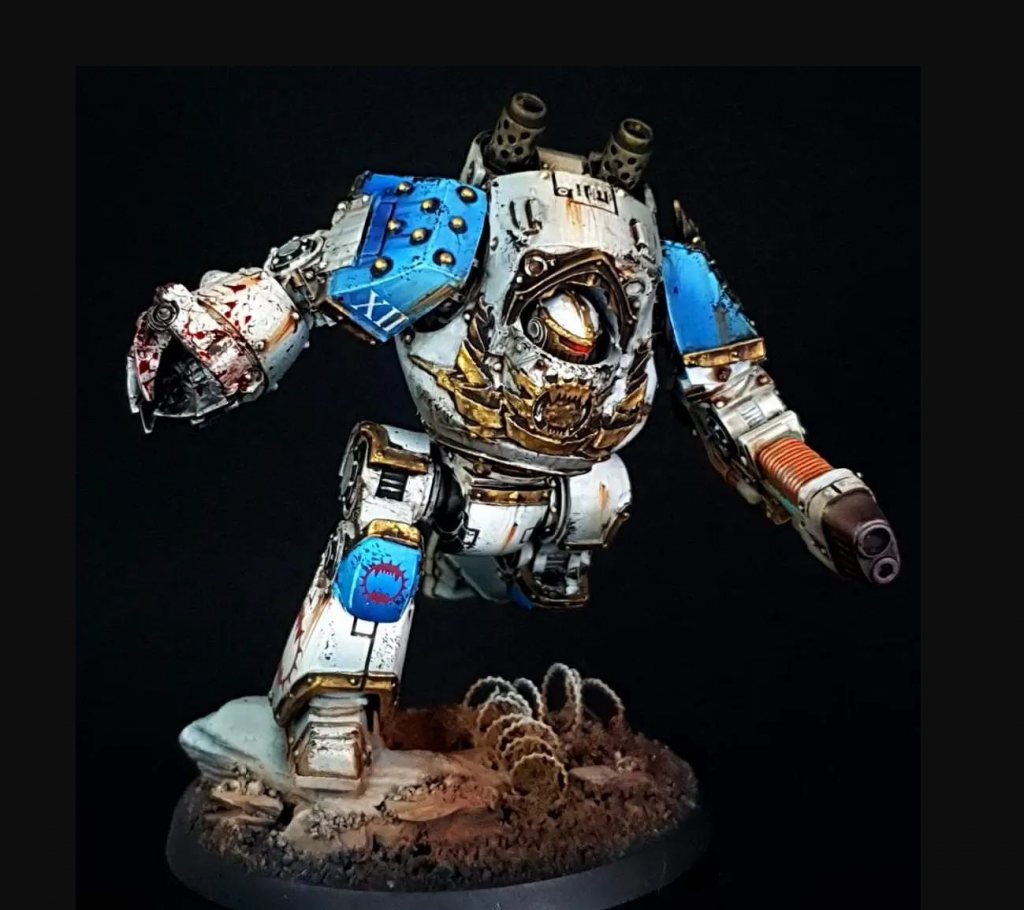
Charging in Heresy is simple – you pick a target (but it must be the target you shot at, if you did a shooting attack), roll 2D6 to represent the inches moved, add/deduct buffs/debuffs (see below), and if you end up in base to base with 1 model, you’re in.
Another phenomenon we have all experienced in a game of 1.0 Heresy – your tooled up band of brutal killers stumbles on a rock when rolling to charge and gets stuck in the open and massacred. The enemy is 4” away! Come on!
You still Charge by rolling 2D6, as before, but you can add a new bonus based on your Movement Value (12” still being the max).
5-7 (the “standard”) gets no bonus, but 8-10 and 11-12 gets +1 or +2, which means your Assault Squads (which have M 12 with their Jump Packs) roll 2D6 + 2 for Charging. This makes them just a little bit more reliable.
The other nice benefit is, if you fail your Charge, you do something new – a Surge Move – half the Charge move, rounding up, towards the enemy. Better than a poke in the eye with a sharp stick, as the saying goes, and this means combat armies can still cover ground even if they get unlucky.
The other major change is to the Weapon Skill table. You can now potentially hit on a 2+, which never used to be the case before, if you outmatch your opponent sufficiently (e.g. WS 5 vs WS 2). The big one, however, is that WS 4 hits WS 5 on a 5+, as does WS 3 v WS 4. I cannot overstate how big this is, potentially.
There are a lot of abilities which tweak your WS up by 1 or your opponent’s down by 1. This used to be fairly average – just giving you a bit of a bonus – but if it prevents your opponents from getting nearly as many hits against you, then its utility shoots through the roof. Emperor’s Children players, rejoice.
Morale
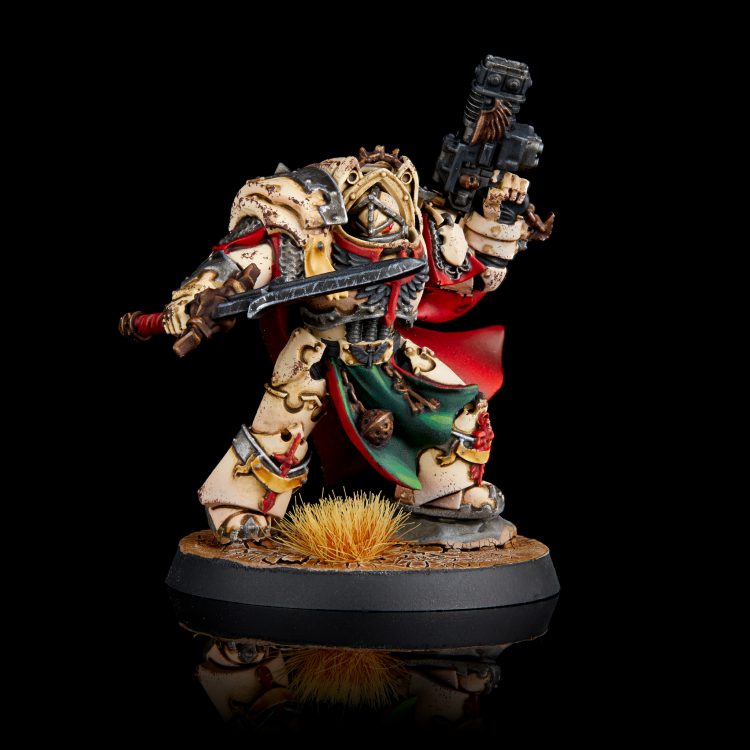
The Morale system per se has not changed – you still take Morale Checks at the end of combat on 2D6 for example, needing equal or under Ld, or if you lose 25% of your models in one phase. Falling Back still works in the same way (2D6 flee towards your table edge), and Pinning is more or less the same, with the new nuance that you cannot do Reactions if Pinned (can’t move, React, or charge for a turn, Snap Shots at BS 1 only).
What has changed are some of the special rules and characteristic values which underpin Morale.
Marine Legionaries are now Leadership 7, and Sergeants are 8. This means, if your Sergeant dies, any negative modifiers to your Leadership (even if just -1), means you are more likely than not to run away or get Pinned. That, incidentally, is also a reason not to trust to the Artificer Armour every time…
When this is combined with a plethora of new rules for weapons which includes Shell Shock (X) which reduces Leadership for Pinning Checks, and Precision Shots being easier to achieve with Sniper weapons (and more generally), it is increasingly likely you will have units with their leaders killed, and then forced to take Leadership checks which are 60-70%+ likely to fail. I would not be surprised if you end up with units Pinned for the entire game unless you deal with enemy snipers, for example.
This will add a whole new layer of tactics and strategy to the game, and also make for much more cinematic moments of units running at key moments, or being able to provide fire support which Pins rather than kills an opponent.
Fundamentally, Morale now has consequences rather than being that random afterthought which might matter once in every three games! Buy rotor cannons.
Reactions
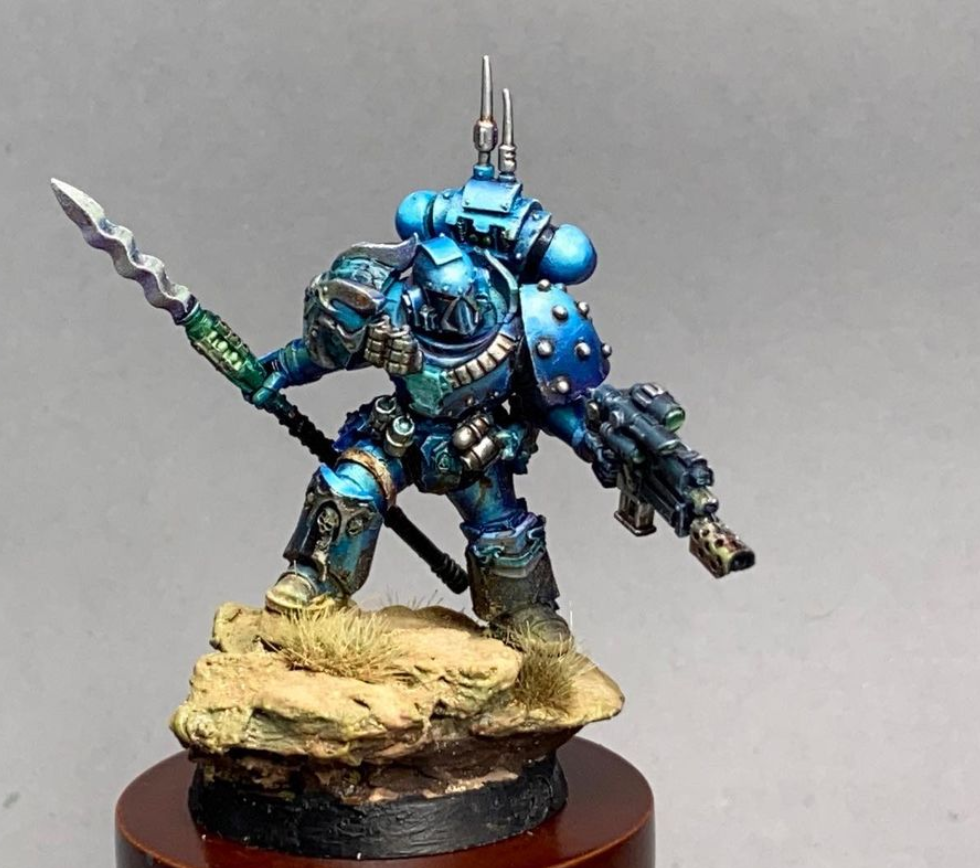
This is the biggest change in the new edition, adding a sort of “sub-phase” to the Movement, Shooting and Assault phases.
A Reaction is an ability which allows a Reactive Player to take an action in their opponent’s turn. This existed in the previous edition in a limited way – for example, Overwatch. It is now fleshed out and the Legions all have flavourful unique Reactions as well.
Each player has a Base Reaction Allotment. This is 1 Reaction per phase of your opponent’s turn – so one in the Movement, one in the Shooting, one in the Assault.
You can increase the Base Reaction Allotment with some powers and abilities. If this happens, you will go up to multiple Reactions per phase (very powerful), up to 3 maximum per Phase (outside of specific circumstances).
More common are special rules which, instead, increase a specific phase’s Reactions – e.g. allowing you to do 2 Assault phase Reactions.
You cannot do a Reaction if you are Pinned or Falling Back (see our Morale discussion above – a key thing to think about if you wish to disrupt your opponent), or if you have already done a Reaction in that phase with that unit.
Each Legion then has a Legion-specific Reaction, but the most common ones which will be used are the Core Reactions:
Movement Phase
If an enemy unit ends its move in line of sight and within 12”, you can take a Reaction.
- Advance – move up to your Initiative value directly towards an enemy unit which triggered the Reaction. Vehicles can pivot 90 degrees and move 6” forward.
- You’ll see this most commonly in Assault armies, but it could also be useful for armies with flamer weapons wanting to trigger a Wall of Death.
- Withdraw – The Reacting Unit can move up to its Initiative value directly away from the enemy unit which triggered the Reaction. Vehicles can pivot 90 degrees and move 6” backwards.
- The opposite of Advance – you’ll see this used for ranged units wanting to avoid an assault. Pin enemy units if you don’t want them to withdraw before you charge.
Shooting Phase
If an enemy unit shoots one of your units, after Armour Saves but before Damage Mitigation and casualties, you can choose to take a Reaction.
- Return Fire – You can make a Shooting Attack against the unit which triggered the Reaction, assuming it isn’t a Barrage weapon. Vehicles can fire Defensive weapons (see below). Template Weapons do a Wall of Death only if within 8”.
- This is amazing, and means you have to be really tactical when shooting an opponent. Picking their Volkite Culverin squad to shoot first might not be the most sensible course of action – or, perhaps, Pin them and then shoot!
- Evade – All models in the Reacting unit (provided they can move) gain Shrouded (5+), effectively like Feel no Pain.
- This is a very interesting option, which means the “alpha strike” or “unlucky saves” wiping out a unit is less likely, provided you bank the Reaction for the right time. It won’t win you the game, but if you roll triple 1s with your Terminators then you might recover one or two with this. A bit of a hail mary, but still really helpful for avoiding potential massed casualties.
Assault Phase
If you have a Charge declared against you, you can choose to React.
- Overwatch – You make a shooting attack at full Ballistic Skill, with Templates using Wall of Death.
- This is much more powerful than older editions, but is off-set by the fact Reactions are limited and you can Pin units to prevent it. However, running into a twenty man Legionary squad might look a bit dicier if they’re ripping 40 Boltgun shots into you at full BS.
- Another thing which might not be obvious, Vehicles can Overwatch now. Be careful of charging that Sicaran Punisher from the front…
- Hold the Line – Make a Morale check, if successful, it forces a Disordered Charge. If the enemy then fails their Charge, any other Charges which hit the Reacting unit will still count as Disordered.
- A key thing to remember is that a Disordered Charge goes beyond simply +1 Attack – things like Furious Charge won’t work, as well as some special weapons and abilities. This is probably going to be used by melee units who are taking a Charge, and so wouldn’t benefit from Overwatching.
As set out above, all the Legions have unique Reactions (“Advanced Reactions”. These are generally once per game, and are very powerful. As an example, we consider the Salamanders Reaction below:
- Duty is Sacrifice – Once per battle, when an enemy player Charges a Legiones Astartes (Salamanders) unit, if the Charge is successful all Infantry models get +1 WS, S and A during that Assault phase. However, when the combat is resolved (i.e. Morale checks are concluded), roll a D6 for each model remaining. On a 6, they take an automatic Wound with no saves or Damage Mitigation rolls allowed. If the Charge fails, then instead they get Fearless with no need to check for Wounds.
- Imagine this with a unit of 20 Legionaries – WS 5, S 5 and A 2 per model. Who cares if a few die at the end – the enemy won’t be standing!
Warlord Traits
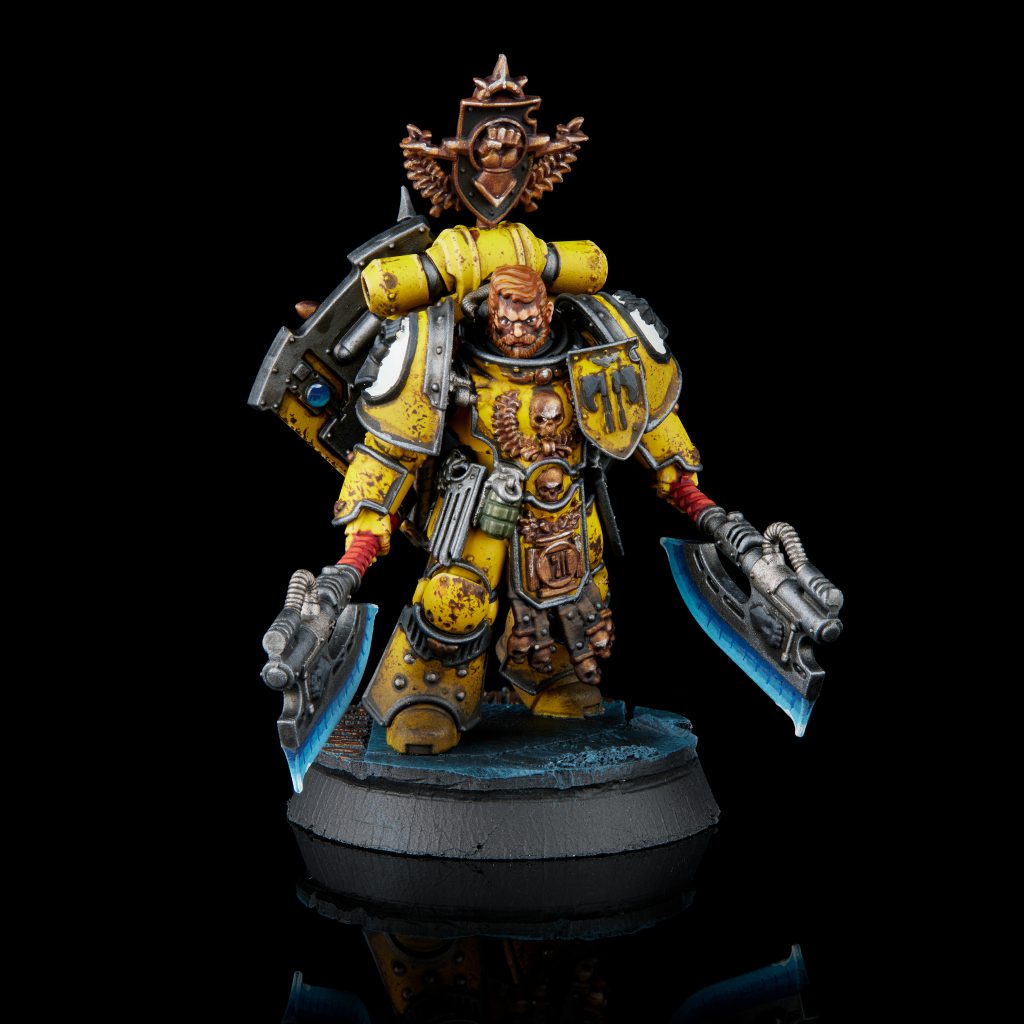
A small, but welcome, change – you can pick your Warlord Traits now, which are special rules tied to your Warlord (army leader). They are, by and large, quite good – with a mixture of “core” Warlord Traits which anyone can pick, and then Legion specific ones. One interesting new nuance is that the Legion specific Traits often have a “Loyalist” and “Traitor” option – so you can add some real fluff to your “reverse” forces (e.g. Traitor Space Wolves, or Loyalist Emperor’s Children).
The big thing Warlord Traits now bring is additional Reactions in a specific phase on top of their benefit. For example:
Stoic Defender: When this Warlord or any friendly unit it joins makes a Shooting attack, the target unit must make a Pinning test if it suffers any unsaved Wounds. In addition, any army whose Warlord has this Trait may make an additional Reaction during their opponent’s Shooting phase as long as the Warlord has not been removed as a casualty.
It is worth thinking about which aspect of the game your army performs best in (or that your opponent does) and boosting the Reactions in that phase!
Vehicle Rules
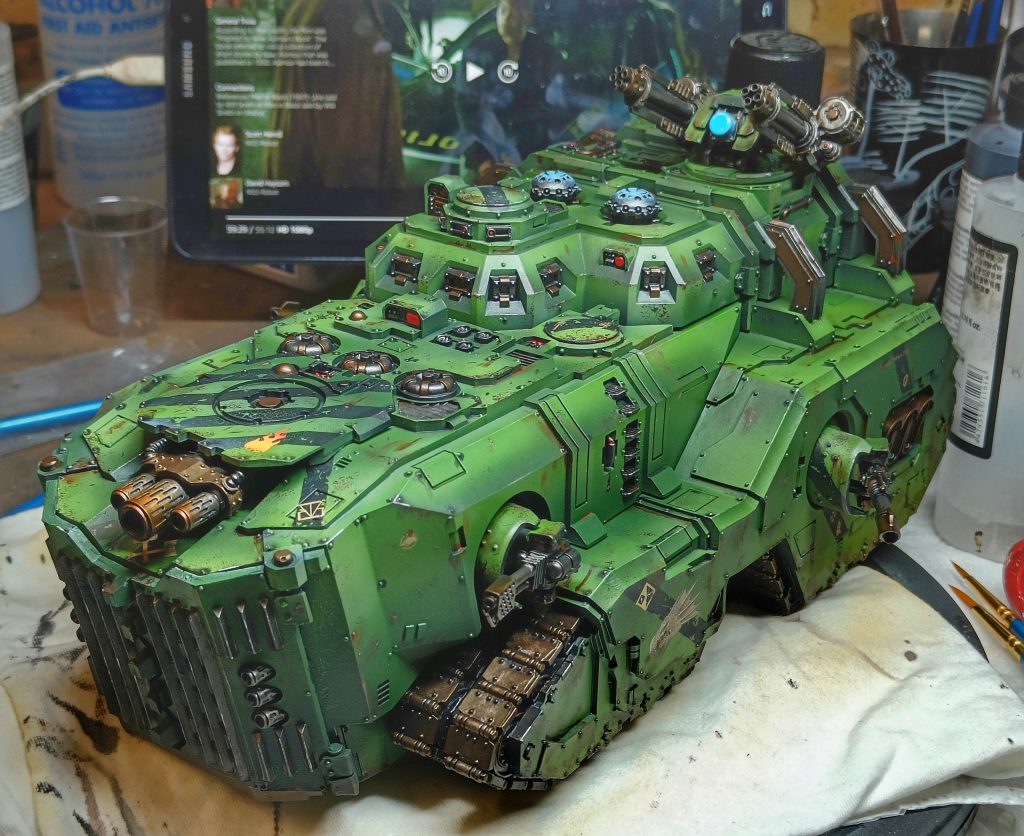
The fundamentals of the way Vehicles work is the same as the previous edition:
- Vehicles have Armour Facings, which are values for the front, side and rear, which you roll against to see if you can damage them.
- They have Hull Points, which are like Wounds for vehicles. If you glance (roll equal to armour value) or penetrate (above armour value) when attacking a vehicle, you roll on a damage table which has various rules from debuffing its shooting for a turn, to blowing it to kingdom come.
- Vehicles generally have powerful weapons, and pack more than one weapon per model. They can move faster than infantry (by and large), and unless you pack the right weapons they can be hard to damage and kill.
- Vehicles have “fire arcs” for their weapons which set out how they can fire them – for example sponsons are more restricted than a 360 turret.
In this newer edition, Vehicles have more HP, move faster, fire more weapons, explode at a higher Strength (8), and carry more men than the older edition. They are, frankly, bloody dangerous. You’ll see a lot of them.
My favourite change is easily the increased Capacity across the board for Transports – e.g. 12 for Rhinos, up from 10. Adding Characters to units is now encouraged, as you can have a 10 man Tactical squad and some Characters in a Rhino. You have to start the game inside a Dedicated Transport if you buy one though – a slight tweak.
Every vehicle has a Movement Characteristic. This has changed the way moving and shooting works.
If Stationary, they can fire all weapons.
If they move equal to, or less, than half their Movement Characteristic, this is Combat Speed. You can attack with anything which isn’t Ordnance or Destroyer with no penalties, or use a single Ordnance/Destroyer weapon and everything else Snap Shoots.
Any faster is Cruising Speed. You can fire a single weapon which isn’t Ordnance or Destroyer at full BS, and everything else Snap Shoots.
You will immediately notice the biggest thing about this – you can still move maximum speed (remember this is 14” for a Rhino, for example), and fire your “main gun” at full BS. Oof!
Added onto this are Defensive and Battle Weapons. Defensive Weapons are anything which is S 6 or below. You can split fire Defensive weapons at the closest enemy Infantry unit within LOS and firing arc. Sponsons have a huge utility as a result as you can have (for example) an anti-tank main gun and anti-infantry sponsons without “wasting” shots.
Some weapons are Co-axial (mounted on a turret), which mean if they fire and score a Hit, then the turret weapon re-rolls failed To Hit rolls. This adds a lot more reliability.
On top of this are some new types of vehicles. Slow Vehicles always count at moving at Cruising Speed (so limited firepower), but roll 2D6 and discard the highest for damage results. Fast Vehicles always count at moving at Combat Speed, and can move twice their Movement Value at the risk of being Crew Stunned on a D6 roll of a 1.
Remember, also, Vehicles can do Reactions. Yes, including Overwatch for certain weapons. Don’t charge that Punisher…
Super Heavy Vehicles (the biggest, and strongest) have also been slightly tweaked. Their ability to React is limited, and the way they blow up is slightly changed – S 7 + D3 AP 4 hits within 6 + D6” inches from the hull, forcing Pinning tests automatically (which are riskier in this edition).
Overall, this means vehicles are bloody nasty in 2.0. You will see a huge number of Predators due to their awesome flexibility in loadouts, and sponsons are back, baby! Just as well we have a lot of brand new plastic kits.
Unit Types
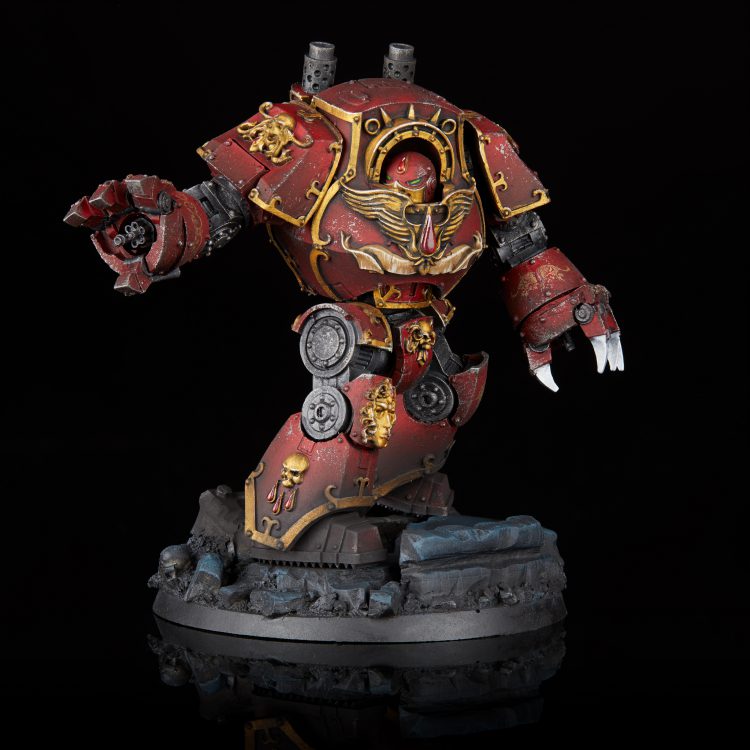
Unit Types are not a new concept. An example is Infantry, or Cavalry, which have different basic rules which apply to them. In this addition there is a new layer – “Sub-Types”. These are not applicable to every unit, but does make it clearer how many units are supposed to work. For example, Light units Run faster and can Snap Shoot after Running.
The main new Sub-Type is “Line”, which makes a unit Scoring and Denial. Another big one is “Heavy” – re-rolling saves against blasts and harder to Pin.
Otherwise you have some new Types – e.g. Primarch, Daemon and Automata. The biggest change to Unit Types is undoubtedly the new Dreadnought type.
Dreadnoughts are no longer Vehicles as before – they’re like Monstrous Creatures almost, which are immune to Instant Death. This makes them much more survivable on the tabletop, and deals with some of the real-world modelling oddities you had with measuring angles and firing arcs from very dynamic models.
Night Fighting
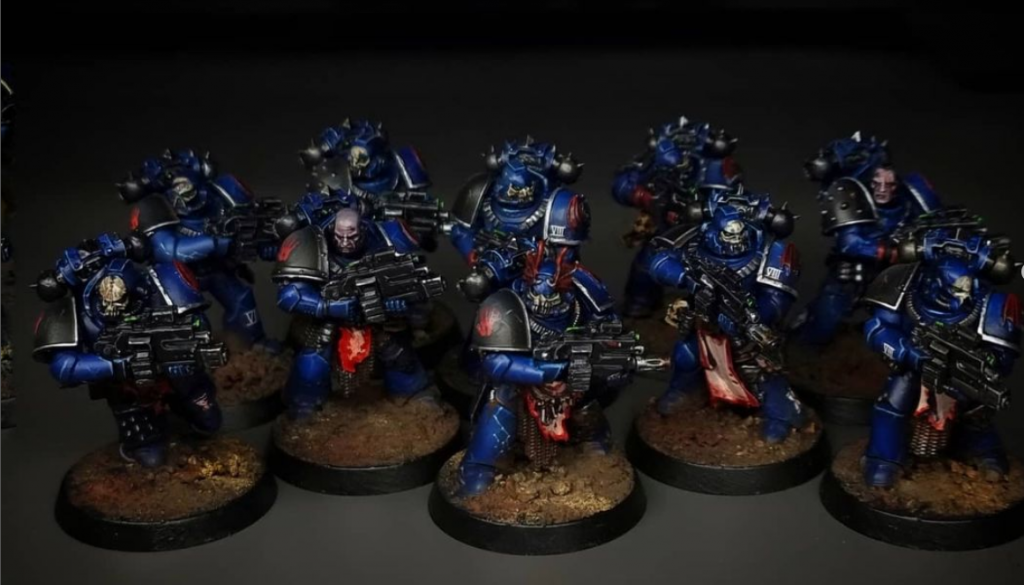
Night Fighting plays very differently than before. If either player wishes, the game can be fought at night if the scenario allows for it.
If this happens, roll a D6. On a 2+, it’s night on turn 1. This continues on turn 2 on a 4+, then ceases (unless you have a special rule which keeps it going).
Night Fighting really changes the dynamics of the early turns – and makes assault-focused armies a bit more forgiving. All units without Night Vision have -1 Ld and BS (so Ld 6 Legionaries hitting on 4+), and you cannot draw LOS more than 24” away (!), with Barrage Weapons able to do so but having to re-roll any Hit on the Scatter dice.
This is really nasty – anything with Night Vision will rule the first turn.
Special Rules
Special Rules are what Heresy calls universal rules which apply in consistent ways. An example is Furious Charge (X) which means any unit with it gets a bonus number of attacks (X) when it charges, or Stubborn which means you do not reduce Leadership at the end of combat if you lose before you take the check.
Generally, most of these are the same as the previous edition of Heresy. However, many now have the “(X)” suffix to them, which is an added nuance. For example, Rending (4+) means you are AP 2 on a 4+ to wound rather than the previous default 6+.
Some newer rules include Shell Shock (X) (reduction to Morale for Pinning purposes), Shrouded (X) (effectively a Feel No Pain roll), and Firing Protocols (X) (you can shoot with a number of different weapons equal to the X).
All of it seems quite tight, and once you familiarise yourself with the most common ones, it will be easy to parse unit profiles.
One to watch out for is Brutal (X) – if you cause a wound, it multiplies out into multiple wounds (and accompanying saves) against the target model. These do not “spill over” onto other models in multi-model units. This means the best way to kill a Dreadnought… is another Dreadnought with a Brutal (3) close combat weapon – 3 successful wounds turn into 9 wounds needing to be saved!
Reserves/Deep Strike/Flanking Assault
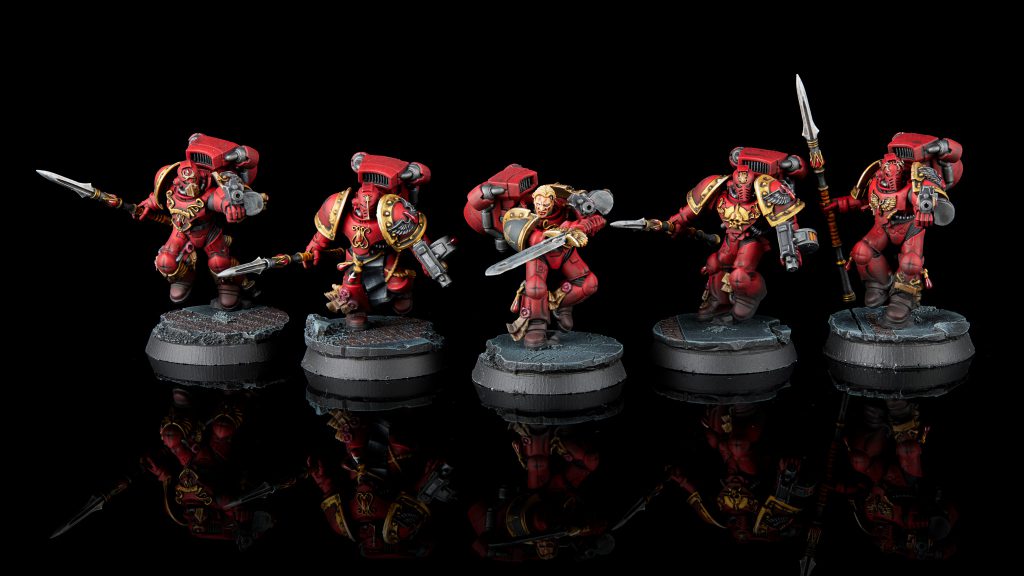
Deep Strike and Outflank always sat, in my view, somewhat awkwardly in the Heresy ruleset. They could be awesomely powerful, and sometimes unbalance a game entirely. Previously you dropped or outflanked things in one by one and it took ages.
A bad Deep Strike roll could often end a game, as a unit spun off into nowhere, died in transit, or got nailed by templates as they clustered up.
Reserves work more or less the same as in earlier editions, except you now have the Advanced Reaction of Interceptor. Reserves come in on a 3+ on Turn 2 or 3, and automatically from 4 onwards. You can keep most things in Reserve as an option in the deployment phase. Usually they move on from your table edge, unless they’re going in a Flanking Assault or Deep Strike.
Interceptor means you can shoot at units which come on from Reserve as a potential Reaction option – so a shot off in the Movement phase. This isn’t that powerful against normal Reserves as usually they come in at the backfield. Where it comes in handy is against Deep Strike and the new Flanking Assaults! Remember, Augury Scanner wargear gives extra Interceptor Reactions – put that on your Plasma Cannons…
Deep Strike Assaults are a new way of deploying. When choosing Reserves, you can place units into a Deep Strike Assault (if they have the Deep Strike special rule). You roll a single D6 for all of these units, and bring them all into play at once (Steel Rain!)
You select one of those units, and deploy it anywhere 1” from an enemy model, table edge, or Impassable Terrain. Scatter it 2D6”. If it ends up within 1” of an enemy model, table edge, or Impassable Terrain, your opponent can reposition it within 18” (so no more Mishaps, but you still end up out of position).
You then put the rest of the unit down, in coherency (no more base-to-base clustering!)
After that is done, if there are other units in the Assault, then roll a D6. On a 1, there has been a calamity and it is Disordered. The opponent deploys all the other units within 24” of the first unit without them scattering. On a 2+, it’s tightly focused, and you instead deploy all the other models within 12” of the first.
Once everything is deployed, all enemy units within 6” make a Pinning test (remember, Morale is worse!). The opponent can then make an Interceptor Reaction.
Once everything is deployed, you cannot Move or Run, but you can Shoot and Assault as normal.
Assaulting out of Deep Strike… I never thought I’d see the day! World Eaters Orbital Assault players are rejoicing. This is brand new for Heresy, but common in 9th.
Ultimately what you’re dealing with now is a very tightly focused attack (so no more Drop Podding all over the table), it’s all over and done with at the same time, and it is much harder to Alpha Strike an enemy army to death as you’ll be all in one part of the table and it no longer happens on Turn 1.
The alternative is, then, a Flanking Assault. Similarly to Deep Strike Assault, you choose 1+ units with Outflank to go into a Flanking Assault (which can be done additionally to a Deep Strike).
After deployment, before Infiltrators/Scout moves, place a Flanking marker on any point on the edge of the battlefield, including the opponent’s Deployment Zone. This is the Flanking Assault arrival point.
Roll a single D6 for the Flanking Assault as per normal reserves. If they come in, roll a D6. On a 1 it is a Disordered Flank, and the enemy player can redeploy the marker within 24” on the edge of the battlefield. On a 2+ it is Ordered and you can instead tweak it 6” either direction.
After this, you move Flanking Assault units on one at a time, up to their Movement Characteristic, measuring from the marker (anyone who can’t fit remains in Reserve and moves on next turn). Any enemy units within 6” then take a Pinning test, and then Interceptor Reactions.
You can Shoot and Assault out of a Flanking Assault.
The above sounds complex but is, in reality, really simple – it makes for a more predictable and less “gotcha!” way of playing the game, and I think you will see a lot more Deep Strike and Outflank focused armies now that it is a very reliable way of getting on the field.
I, for one, am doubling and tripling up on Termites! Bring on the Tempest Galleries.
Points Changes
The points changes are pretty much universal, so it is impossible to really get into them in any sort of detail. However, to assist in visualising it, I have written a 3,000 point Covenant of Fire list which I have taken in previous editions, and then calculated it in “new money”.
- Praetor with Cataphractii Armour, Paragon Blade, Dragonscale Storm Shield, other upgrades
- Primus Medicae with Cataphractii Armour, Thunder Hammer, Dragonscale Storm Shield, other upgrades
- 5 Firedrakes in a Spartan with Chainfists/Thunder Hammers, Dragonscale Storm Shields
- 2 units of 10 Tactical Marines in a Multi-Melta Rhino with upgrades
- 1 unit of 10 Flamer Marines in a Multi-Melta Rhino with upgrades
- 1 unit of 10 Pyroclasts in a Land Raider Proteus
- 2 Contemptors (Kheres/DCCW, DCCW/DCCW)
- 1 Deredeo (Aiolos, Autocannons)
- 2 Flamestorm Predators
The above comes out to almost 3,000 points on the nose in 1.0 points.
In 2.0, it has to be tweaked – e.g. I can’t take the Medicae because I have to take a Champion – but then more things become Troops. It came out as around 100 pts more expensive! Not a huge change in the new edition, thankfully. I would have fewer models, but not by huge amounts, and everything is much tougher, deadlier, and has more utility (the Predators and Contemptors, in particular).
Some immediate things struck me when going through the 2.0 points. The first is that I would not write this list for the new edition!
I’d stick the Pyroclasts in a Terrax (Covenant of Fire 2.0 allows this), take free flamer sponsons on the Predators (which would be Troops!), chuck in a psyker, etc.
There are a lot of immediate changes just from the shifts in the core rules, which is really interesting to me.
I think we will see dramatically different army lists going forward as a result, and leaning hard towards fluffy/lore focused forces which now have some decent utility generally.
Conclusion
The new “Black Book” (the ‘Nuj Testament?) is a hefty read, and the changes to the core rules and mechanics of the Heresy game are legion (if you’ll pardon the pun).
Some of the best changes are the most subtle – for example, Morale meaning that you have to think carefully about your leadership, and that you will see “forgotten” weapons like Sniper rifles or Rotor Cannons grace the battlefield once more. Vehicles are now incredibly dangerous, and have benefited from “quality of life” changes like Transport capacity boosts.
Overall the game looks as though it will play in a smoother and quicker fashion than before, which is always a good thing. Many of the truly eye-rolling parts of the old edition (Look Out Sir!/Psychic Phase) are stripped out, which is delightful.
All of that is on top of an amazing lore section, really drawing the reader into the Heresy setting, which is among the richest backgrounds in the GW IP.
Let’s get playing!
What’s Next: Liber Astartes
That wraps up our look at the core rules but next up we’ve got our look at the Liber Astartes, the rules for the loyalist legions. It’s another massive book, full of even more rules than the core book (it has less fluff), so stay tuned for our look at those rules.
Have any questions or feedback? Drop us a note in the comments below or email us at contact@goonhammer.com.


